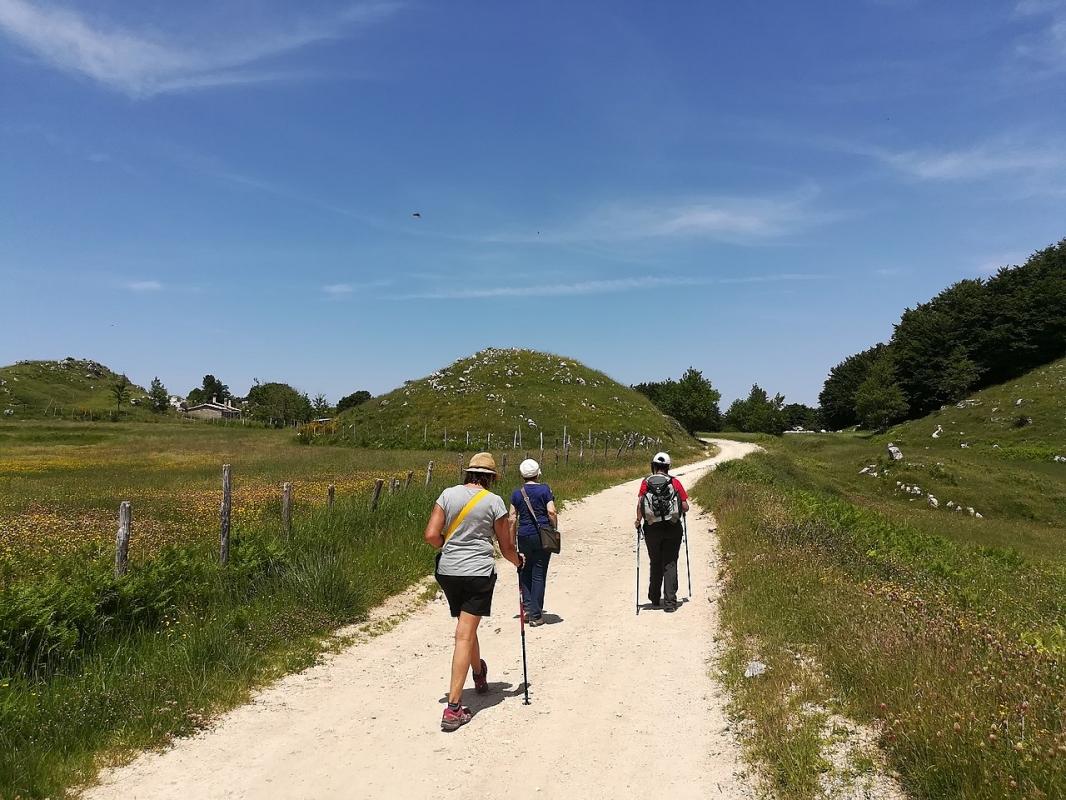TREKKING IN THE PO DELTA PARK
THE VIA ROMEA GERMANICA
In the Middle Ages, the pilgrims' roads to Rome were called Via Romea. Rome was one of the main destinations of Western Christianity, together with Jerusalem and Santiago de Compostela.
The Via Romea Germanica retraces the journey made by the Benedictine monk Alberto di Stade to Rome in 1236 and was both one of the "Peregrinationes Majiores" for pilgrims of that time, and one of the privileged routes by means of which kings, Saxon emperors and Swabian sovereigns maintained their links with the city where the papacy had its seat.
Today, this ancient 1020 km long itinerary is a great European route of culture and faith that crosses different nations and touches some of the most important Italian cities that still play an important role in history.
It starts in Augsburg, where the schism of 1517 was sanctioned, and passing through Trento, the city of the Counter-Reformation, and Padua, home of the Basilica del Santo, it enters Emilia Romagna through the Po Valley. It then skirts the city of Ferrara and from here reaches the Po Delta, the Abbey of Pomposa and then Ravenna, home to Byzantine places of worship and the splendid Mausoleum of Theodoric. Near the Apennines, the Via Germanica then climbs up towards Bagno di Romagna and the Serra Pass, crossing the Casentino Forest Park, from where it then descends towards Tuscany and Rome.
These are the Italian stages of the journey
- 1 Brennero - Vipiteno 16,5 km
- 2 Vipiteno - Bressanone 32,7 km
- 3 Bressanone - Chiusa 15 km
- 4 Chiusa - Collalbo 20,5 km
- 5 Collalbo - Bolzano 16 km
- 6 Bolzano - Termeno 26,1 km
- 7 Termeno - Salorno 17,8 km
- 8 Salorno - Trento 29,5 km
- 9 Trento - Levico Terme 21,5 km
- 10 Levico Terme - Borgo Valsugana 14,7 km
- 11 Borgo - Cismon del Grappa 32 km
- 12 Cismon - Bassano del Grappa 23,2 km
- 13 Bassano del Grappa - Piazzola sul Brenta 33 km
- 14 Piazzola sul Brenta - Padova 26 km
- 15 Padova - Monselice 21 km
- 16 Monselice - Rovigo 34,7 km
- 17 Rovigo - Polesella 20,2 km
- 18 Polesella - Ferrara 22,5 km
- 19 Ferrara - Traghetto 29,9 km
- 20 Traghetto - Argenta 16,5 km
- 21 Argenta - Valli di Comacchio 28,2 km
- 22 Valli di Comacchio - Casalborsetti 18,2 km
- 23 Casalborsetti - Ravenna 21,5 km
- 24 Ravenna - Forlì 30,7 km
- 25 Forlì - Cusercoli 28,3 km
- 26 Cusercoli - Santa Sofia 20,5 km
- 27 Santa Sofia - Bagno di Romagna 24,3 km
- 28 Bagno di Romagna - Valle Santa 18,1 km
- 29 Valle Santa - Chitignano 20,4 km
- 28 Bagno di Romagna - La Verna 23,3 km
- 29 La Verna - Chitignano 10,8 km
- 30 Chitignano _ Subbiano 18,3 km
- 31 Subbiano - Arezzo 19,4 km
- 32 Arezzo - Castiglion Fiorentino 24,8 km
- 33 Castiglion Fiorentino - Cortona 12,8 km
- 34 Cortona - Pozzuolo 24,5 km
- 35 Pozzuolo - Paciano 21 km
- 36 Paciano - Città della Pieve 15,6 km
- 37 Città della Pieve - Ficulle 21,7 km
- 38 Ficulle - Orvieto 24,8 km
- 39 Orvieto - Lubriano/Civita di Bagnoregio 19,5 km
- 40 Lubriano/Civita di Bagnoregio - Montefiascone 16,2 km
- 41 Montefiascone - Viterbo 18,3 km
- 42 Viterbo - Vetralla 16 km
- 43 Vetralla - Sutri 23,5 km
- 44 Sutri - Campagnano 24,5 km
- 45 Campagnano - La Storta 22,8 km
- 46 La Storta - Roma 19 km
THE VIA DELLA MISERICORDIA (THE WAY OF MERCY)
This 245-km route, 225 of which run through the Emilia-Romagna region, is the result of the devotion of a group of people who wanted to bring together and share the heritage of traditions, faith, history, art and culture of the Faenza area. On the occasion of the extraordinary Jubilee year proclaimed by Pope Francis in 2015, the Diocese of Faenza decided to promote this itinerary, as an opportunity to discover a land of ancient faith, first and foremost a place of industrious existence.
From the Pomposa Abbey to the Gamogna Hermitage in a ring-route passing through the art cities of Comacchio, Faenza and Bagnacavallo through territories steeped in faith, culture, art, natural and river parks as well as a welcoming community with excellent food and wine. It is possible to walk it with the Pilgrim's Credential (also known as the Pilgrim’s Passport) issued by the Diocese of Faenza. The route links up with other national routes such as the Via Francigena or the Cammino di Sant'Antonio ("St Anthony's Way"). The "Viae Misericordiae ad Iesum per Mariam" route starts from Porto Garibaldi or from Pomposa Abbey and, in order to obtain the certificate of pilgrimage, all the stages must be completed with stamps, even on non-consecutive days.
These are the stages of the journey:
- Abbazia di Pomposa - Porto Garibaldi
- Porto Garibaldi - Madonna del Bosco
- Madonna del Bosco - Bagnacavallo
- Bagnacavallo - Solarolo
- Solarolo - Quartolo
- Quartolo - Fognano
- Fognano - Abeto
- Abeto - Gamogna
- Gamogna - Modigliana
- Modigliana - Montepaolo
- Montepaolo - Faenza
- Faenza - Bagnacavallo




